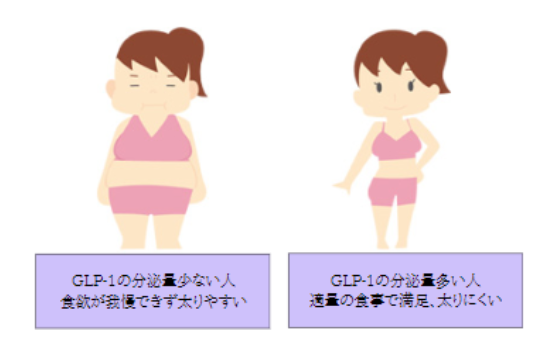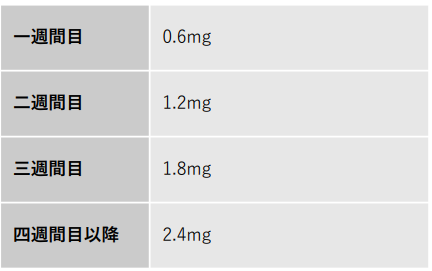Saxenda


Is Saxenda Safe? Comprehensive Explanation of Risks, Side Effects, and Expected Effects
Saxenda is expected to suppress appetite, making it suitable for those who want to lose weight without extreme measures or lack time for dieting.
However, there are concerns about its safety, with negative feedback on risks and side effects. This has led some to hesitate in using Saxenda.
Therefore, this article will thoroughly explain the risks, side effects, safe usage methods, and expected effects of Saxenda. By addressing concerns about Saxenda, you can decide if it's suitable for your needs.
Recommended for Those
with Such Concerns
with Such Concerns
-
 Want to lose weight without strain
Want to lose weight without strain -
 Hard to feel full
Hard to feel full -
 Dieting feels painful due to food restrictions
Dieting feels painful due to food restrictions -
 Unable to lose weight despite exercising
Unable to lose weight despite exercising -
 Desire to achieve ideal body shape stress-free
Desire to achieve ideal body shape stress-free -
 Considering dieting for health reasons
Considering dieting for health reasons -
 Struggle with rebound weight gain after successful dieting
Struggle with rebound weight gain after successful dieting -
 Lack of time to commit to dieting
Lack of time to commit to dieting

What is Saxenda?
The main active ingredient in Saxenda, liraglutide, is known for its appetite suppressant effect, which helps reduce overeating, and its gastric emptying delay effect, which promotes a feeling of fullness with smaller meals. These properties are expected to help manage obesity by curbing excessive eating habits.
Liraglutide, a component of Saxenda, is also known as a GLP-1 (glucagon-like peptide-1) injectable drug, often referred to as the "slimming hormone." It not only stimulates insulin secretion to lower blood sugar levels but also regulates gastrointestinal function, thereby suppressing appetite and potentially contributing to weight loss.
Source: Novo Nordisk Pharma Co., Ltd. "Novo Nordisk obtains European approval for Saxenda® for the treatment of obesity"

for Such Concerns

What is サクセンダ ?

Semaglutide is an injectable drug that targets GLP-1.
Taking Rybelsus can suppress appetite, leading to expected weight loss and effective dieting.
It not only stimulates insulin secretion to lower blood sugar levels but also regulates gastrointestinal movements to curb appetite.
Due to its ability to lower blood sugar levels, it is used as a treatment for type 2 diabetes.
The mechanism by which Saxenda works to improve obesity
GLP-1 is a hormone secreted by the pancreas that suppresses the rise in blood sugar levels when eating.
GLP-1 is also involved in the digestion and absorption of food from the intestines, and is also expected to have the effect of suppressing appetite by acting on the appetite center in the brain.
However, please note that the appetite suppressant effect of Saxenda varies from person to person and may differ from person to person. The mechanism of the appetite suppressant effect is that Saxenda (luisentide) binds to the GLP-1 receptor and acts on the appetite center in the brain.
This binding stimulates the satiety and satiety centers, suppressing appetite. Appetite suppression by Saxenda will lead to a reduction in the amount of food eaten.
By reducing the amount of food eaten, calorie intake is suppressed, which is expected to be effective in losing weight. Furthermore, GLP-1 also has the effect of suppressing the rise in blood sugar levels after meals. By suppressing the rise in blood sugar levels that is affected by meals, hunger is alleviated and appetite is suppressed.
Differences with Saxenda and Victoza
| 1回あたりの投与量 | 上限量 | 日本国内 | |
|---|---|---|---|
| Saxenda | 0.6〜3.0mg | 3.0mg | × not covered by insurance |
| Victoza | 0.3〜1.8mg | 1.8mg | 〇 covered by insurance |
Victoza has been approved by the Ministry of Health, Labor and Welfare as a treatment for type 2 diabetes, while Saxenda is not approved in Japan at this time. Therefore, if prescribed as a treatment for type 2 diabetes, Victoza is covered by insurance, but Saxenda is fully self-paid.
Saxenda and Victoza also have different maximum dosages. Saxenda is administered at a dose of 0.6 to 3.0 mg, while Victoza is administered at a dose of 0.3 to 1.8 mg. Saxenda can be administered up to 3.0 mg at a time, so it is expected to be more effective than Victoza. Source: Ministry of Health, Labor and Welfare "Partial Revision of Drug Prices (Drug Price Standards) for Drugs Used"
Source: Ministry of Health, Labor and Welfare "Partial Revision of Drug Prices (Drug Price Standards) for Drugs Used"

Comparison with other treatments
Also, dieting, such as "reducing food intake" and "exercising," can be said to be effective ways to reduce visceral fat.

Features of Saxenda(GLP-1)
-
POINT
1naturally suppress appetiteGLP-1 contained in Saxenda naturally suppresses appetite by gently controlling it. Administering Saxenda enables better control over meal sizes, allowing satisfaction with smaller portions. GLP-1 acts on neurons in the hypothalamus, a brain region governing the autonomic nervous system, to regulate appetite. This mechanism naturally suppresses appetite. As a result, significant reduction in food intake can lead to weight loss.

-
POINT
2facilitate fat breakdownGLP-1 enhances energy expenditure efficiency, which is expected to promote fat breakdown. Continuously administering Saxenda can lead to weight loss without the need for intense exercise or extreme dietary restrictions.

-
POINT
3increased basal metabolismGLP-1 also enhances basal metabolism, making it easier to achieve a lean body composition. Basal metabolism refers to the minimal energy required to sustain life. By increasing energy expenditure through GLP-1 administration, fat can be efficiently burned. Younger individuals often have higher basal metabolic rates, allowing them to potentially lose weight without special exercise or dietary restrictions. However, as people approach middle age and beyond, their basal metabolism decreases, making weight loss more challenging. As a result, many turn to medications or treatments to aid in their dieting efforts.

Reasons Why MY Beauty Clinic is Chosen



1
Medical slimming tailored to patients
(medical diet)
Specialized clinic
(medical diet)
Specialized clinic
2
4 minutes walk from Ginza Station!
Open until 19:00 and on Saturdays and Sundays, making it easy to visit
Open until 19:00 and on Saturdays and Sundays, making it easy to visit
3
Clear pricing and
support for various payment methods
support for various payment methods
[Danger] Reasons why Saxenda is said to be dangerous
Saxenda, a appetite suppressant through self-injection, is generally safe when used under medical supervision. However, online searches about Saxenda often reveal negative terms like "dangerous" or "harmful," which might cause some to wonder about its safety.
Here, we explain reasons why some consider Saxenda to be risky, aiming to address concerns and doubts.
[Reasons Why Saxenda is Considered Dangerous]
- - Due to gastrointestinal side effects
- - Reports of health damage from use by unauthorized individuals
- - Circulation of counterfeit or substandard products through personal importation
- - Potential for complications from self-injection
Due to Gastrointestinal Side Effects
Saxenda is noted for its potential gastrointestinal side effects. These include discomfort in the stomach, constipation, diarrhea, nausea, and vomiting, raising concerns about digestive system strain.
However, these symptoms are largely attributed to its gastric emptying delay effect, which isn't typically long-lasting, thus minimizing significant risks.
Reports of Health Damage from Use by Unauthorized Individuals
Saxenda acts on the pancreas to lower blood sugar, making it unsuitable for individuals at risk of hypoglycemia or with a history of pancreatitis.
People allergic to Saxenda's components or currently using other diabetes treatments (internally or by injection) are also advised against its use.
While those deemed suitable by medical assessment can use it safely, reports exist of serious health damage from unauthorized personal imports and self-administration without medical consultation, contributing to its perceived risks.
Circulation of Counterfeit or Substandard Products through Personal Importation
Saxenda, available for personal import from various sources online, has led to instances where counterfeit, substandard, or expired products have been received. Usage without medical oversight or with substandard products increases health risks, reinforcing the perception that Saxenda equals danger.
Specific cases include receiving expired Saxenda or counterfeit versions, or delays in delivery despite orders placed.
Personal imports lack legal or official recourse, making users solely responsible for any serious health issues or side effects. For safe weight management, refrain from personal importation and self-administration.
Potential for Complications from Self-Injection
Saxenda involves self-administered injections, posing risks like internal bleeding or swelling if used incorrectly.
Unlike typical injections such as IV drips or vein injections, Saxenda utilizes a medication-filled pen for easy administration without needing to find a vein. It's typically injected into fatty areas like the abdomen, upper arms, or thighs, causing minimal discomfort.
Other self-injection medications like Victoza, approved by Japan's Ministry of Health, Labour and Welfare for diabetes treatment, follow a similar approach.
However, risks include potential bruising, swelling, or needle breakage if handled forcefully or injected at difficult angles.
What you can expect from Saxenda
Effects and benefits
Effects and benefits
Using Saxenda can yield the following effects. Understanding why Saxenda helps with weight loss becomes clear.
① Appetite Suppression
By using Saxenda, the increase in a hormone called GLP-1, known as the "thinness hormone," helps prevent rapid increases in blood sugar, making it less likely for fat to accumulate.
Moreover, GLP-1 acts on the satiety center to suppress appetite, allowing satisfaction with smaller meals. This not only reduces regular meal sizes but also controls binge eating, making weight loss achievable without undue stress.
② Facilitating Fat Breakdown
GLP-1 enhances energy efficiency, promoting fat breakdown even without strenuous exercise or restrictive diets when Saxenda is consistently administered.
Additionally, GLP-1 is expected to reduce "visceral fat," which accumulates when excess carbohydrates turn into neutral fats in the body. Low levels of GLP-1 in the blood can lead to overeating and easy accumulation of visceral fat.
Saxenda administration increases GLP-1 levels in the body, improving resistance to weight gain.
③ Boosting Basal Metabolism
Using Saxenda increases GLP-1 in the body, which is associated with improved basal metabolism. Higher basal metabolism increases fat burning efficiency, facilitating a naturally slim body.
While young people naturally have high basal metabolism, allowing efficient fat burning without intensive exercise or dieting, metabolism decreases with age, making weight loss more challenging. Therefore, many people turn to obesity treatments like Saxenda to manage their weight.
Saxenda side effects
Using Saxenda carries risks of potential side effects. Here, we introduce some of the common side effects.
① Hypoglycemia
When using Saxenda, there is a risk of blood sugar levels dropping too low.
Symptoms may include cold sweats, headaches, decreased concentration, palpitations, blurred vision, dizziness, fatigue, anxiety, coma, rapid pulse, hunger, seizures, trembling of hands and feet, drowsiness (hypersomnia), and pallor.
[Response to Symptoms]
- ・Take glucose (10g)
- ・Take sugar (20g, such as cube sugar)
- ・Drink beverages containing glucose (such as juice or soft drinks, about 150-200ml)
② Gastrointestinal Symptoms
This is a common side effect, especially when starting to use Saxenda.
Symptoms may include discomfort in the stomach, constipation or diarrhea, nausea, and vomiting.
[Response to Symptoms]
- ・Avoid fatty foods and reduce meal size if nauseous
- ・Stop eating when feeling full
- ・Symptoms often improve over time. If your condition does not improve, please consult our clinic.
How to Inject Saxenda at Home
Points to consider: Please change the injection site each time. It is advisable to move about 2-3cm (two finger widths) from the previous site. Continuously injecting in the exact same spot may cause the skin in that area to harden and reduce the effectiveness of the injection.
The number of injections is once a day, ideally at the same time each day. Additionally, it is important to inject either in the morning or in the evening.
The time when you are less likely to feel hungry is "about 10-12 hours after the injection." If you inject in the morning, this time will coincide with dinner time, helping to control your dinner intake.

About setting the dosage of Saxenda
If it is within 12 hours of your usual injection time, please make sure to inject.
Absolutely do not inject two days' worth at once.
Additionally, if you forget to inject for 3 days or more, please restart at 0.6mg as you did initially.

How to store and preserve saxenda
Unused Saxenda should be stored in the refrigerator. Be careful about placing it in areas where it might freeze, such as in the freezer or where cold air directly hits it in the refrigerator.
Saxenda that has frozen once cannot be used. Store Saxenda in use at room temperature between 1-30°C and use it within 30 days.
Below is a list of places to avoid when storing Saxenda.
【Places Unsuitable for Storage】
- ・Places where dust and dirt are likely to accumulate
- ・Places where water is likely to splash
- ・Places exposed to direct sunlight (such as by a window)
- ・Extremely high temperatures (such as inside a car)
- ・Extremely low temperatures (below 1°C)
- ・Places accessible to children or pets
Process of receiving Saxenda treatment
Treatment Process
-
1STEP 1: ReservationIf you prefer to make a reservation online, please access the counseling reservation form and enter your basic information such as name, date of birth, and phone number. In the section for "Things you are concerned about," please check "Medical Weight Loss."

-
1STEP 1: ReservationIf you prefer to make a reservation online, please access the counseling reservation form and enter your basic information such as name, date of birth, and phone number. In the section for "Things you are concerned about," please check "Medical Weight Loss."

-
2STEP2 Visit the hospitalWhen you visit the clinic, please bring your ID and arrive by your reservation time. Our reception staff will assist you. In the waiting room, we provide items for sale, magazines, treatment pamphlets, and a water dispenser. Feel free to pick up anything you are interested in and relax while you wait.

-
2STEP2 Visit the hospitalWhen you visit the clinic, please bring your ID and arrive by your reservation time. Our reception staff will assist you. In the waiting room, we provide items for sale, magazines, treatment pamphlets, and a water dispenser. Feel free to pick up anything you are interested in and relax while you wait.

-
3STEP3 Fill out the medical questionnaireFor your first visit, we ask that you present your ID for verification. You will be asked to fill out a medical questionnaire about "Consultation details," "Allergies," "Medications you are taking," etc. When it's your turn, our staff will guide you through counseling → examination → treatment in that order, so please wait for a moment.
-
3STEP3 Fill out the medical questionnaireFor your first visit, we ask that you present your ID for verification. You will be asked to fill out a medical questionnaire about "Consultation details," "Allergies," "Medications you are taking," etc. When it's your turn, our staff will guide you through counseling → examination → treatment in that order, so please wait for a moment.
-
4STEP4 CounselingDuring the counseling, we will listen to your concerns and wishes and propose the best treatment based on the information gathered. After explaining the treatment details, duration, and number of sessions, we will provide an estimated cost. If you have any concerns or questions, please feel free to ask.

-
4STEP4 CounselingDuring the counseling, we will listen to your concerns and wishes and propose the best treatment based on the information gathered. After explaining the treatment details, duration, and number of sessions, we will provide an estimated cost. If you have any concerns or questions, please feel free to ask.

-
5STEP5 ExaminationAfter the counseling, a specialist doctor will examine you to determine if prescribing Saxenda is appropriate. If you have any concerns or issues, please feel free to consult with the doctor. Additionally, based on the doctor's assessment, a different treatment method or medication from what was proposed during the counseling may be recommended.

-
5STEP5 ExaminationAfter the counseling, a specialist doctor will examine you to determine if prescribing Saxenda is appropriate. If you have any concerns or issues, please feel free to consult with the doctor. Additionally, based on the doctor's assessment, a different treatment method or medication from what was proposed during the counseling may be recommended.

-
6STEP6 Payment of treatment feesAt our clinic, you can pay by cash, various credit cards, or medical loans. If you wish to use a medical loan specifically for medical institutions, please inform the staff when making your reservation as there are documents you will need to bring in advance. Referral bonus points are also available.

-
6STEP6 Payment of treatment feesAt our clinic, you can pay by cash, various credit cards, or medical loans. If you wish to use a medical loan specifically for medical institutions, please inform the staff when making your reservation as there are documents you will need to bring in advance. Referral bonus points are also available.

-
7STEP7 TreatmentThe attending nurse will administer the treatment using the method that is most suitable for the patient.

-
7STEP7 TreatmentThe attending nurse will administer the treatment using the method that is most suitable for the patient.

-
8STEP8 Next reservation adjustmentAfter the treatment, if necessary, please feel free to use the powder room before you leave. Our staff will guide you to the reception. If you need to make your next appointment or get an estimate for a treatment course, we can arrange that at the reception. If you are considering purchasing any items, please let our staff know.

-
8STEP8 Next reservation adjustmentAfter the treatment, if necessary, please feel free to use the powder room before you leave. Our staff will guide you to the reception. If you need to make your next appointment or get an estimate for a treatment course, we can arrange that at the reception. If you are considering purchasing any items, please let our staff know.

Price Guide
The Risk of Rebound with Saxenda Use for Weight Loss
The Saxenda diet does not involve restricting food intake or engaging in excessive exercise, which can lead to mental stress. Because it is a diet that causes little stress, the risk of rebound is relatively low.
The main reasons for rebound after dieting are excessive eating due to stress and a decrease in muscle mass leading to reduced energy expenditure. Extreme dietary restrictions can cause overeating due to excessive stress and muscle breakdown due to lack of energy during the diet period, making rebound more likely.
Since Saxenda has minimal rebound risk, you should be able to maintain your body shape as long as you do not suddenly increase your food intake or drastically reduce your exercise.
Here is a summary of places to avoid when storing Saxenda.
【Precautions】
Cases Where Saxenda Cannot Be Used
Individuals who fall into the following categories cannot take Saxenda:
- ・Pregnant, breastfeeding, or wishing to become pregnant
- ・Those who have had pancreatitis in the past
- ・Those who are taking or injecting other diabetes medications
- ・Those who are allergic to Saxenda's ingredients
Even if you do not fall into the above categories, Saxenda may not be suitable due to individual constitution or daily health conditions. Therefore, anyone considering using it should always consult a specialist doctor and use the appropriate dosage.
Our clinic directly imports Saxenda from Novo Nordisk in Denmark.
As of now, Saxenda is approved as an obesity treatment drug by the U.S. Food and Drug Administration (FDA) and in EU countries, but it is not approved for its efficacy and benefits in Japan. Please use it with this in mind.
About Saxenda Insurance Coverage
The cost of Saxenda can vary between clinics. While many people may think, "If it's the same medicine, cheaper is better," some clinics may include fees for detailed examinations and aftercare in their prescription charges. Therefore, it is important to carefully choose a clinic where you can receive treatment with confidence, rather than just comparing prices.
However, Victoza, which has the same main ingredient (liraglutide) as Saxenda, is approved by the Ministry of Health, Labour and Welfare. However, Victoza is approved as a treatment for type 2 diabetes, so it cannot be used under insurance coverage unless you have a diagnosis of diabetes.
Source: Ministry of Health, Labour and Welfare "Proper Use of GLP-1 Receptor Agonists and GIP/GLP-1 Receptor Agonists"
Source: Ministry of Health, Labour and Welfare "Partial Revision of Drug Prices (Drug Price Standards), etc."
Frequently Asked Questions
Q
I am afraid of injecting the needle; is there any pain?
Q
Is there a specific time of day when I should inject?
There is no specific time of day to inject Saxenda. However, irregular intervals between injections may increase the likelihood of side effects, so it is generally recommended to inject at the same time every day.
Q
Is it easy to regain weight after losing it with Saxenda?
If you find it difficult to control your appetite and your food intake increases compared to when you were on treatment, the likelihood of rebounding will be higher. By making it a habit to exercise regularly and control your food intake, you can reduce the risk of rebound.
Q
How much weight will I lose?
According to a trial conducted in 2015 targeting individuals with a BMI over 27, an average weight loss of 8.4 kg was observed.
However, since this trial targeted individuals recognized as obese, those who are mildly obese or not obese may not see such significant results.
Q
Will it be cheaper with insurance?
Q
What are the characteristics of people for whom Saxenda does not work or who cannot lose weight?
Q
When can I start feeling the effects of Saxenda?
Q
Is it dangerous to order cheap Saxenda by personal import?
Q
What is the relationship between Saxenda and depression?
Inquiries & Reservations
Please feel free to contact us.






